Knee Replacement
Updated:
(Also known as Knee Replacement Surgery, Total Knee Replacement, Total Knee Joint Replacement, Total Knee Arthroplasty)
What is a knee replacement?
A knee replacement is a significant surgical procedure that involves removal of a damaged, diseased and poorly functioning knee joint, often due to gradual wear and tear associated with osteoarthritis. This is subsequently replaced with an artificial or prosthetic joint that may be made of metal alloys, ceramic material or strong plastic components.
Knee Replacement Anatomy
The knee joint is a hinge joint that primarily comprises of the union of two bones: the long thigh bone (i.e. the femur) and the shin bone (tibia) (figure 1). Between the bone ends are 2 round discs made of cartilage called the medial (inner) and lateral (outer) meniscus (figure 1). Articular cartilage also lines the respective joint surfaces. The articular cartilage and menisci act as shock absorbers, providing cushioning for the femur as it places pressure on the tibia during weight-bearing activity (e.g. standing, walking, running etc.). The knee cap (patella), situated at the front of the knee, also forms a joint with the femur (i.e. the patello-femoral joint). Strong ligaments and connective tissue (such as the joint capsule) hold the knee bones in alignment, giving the joint stability.
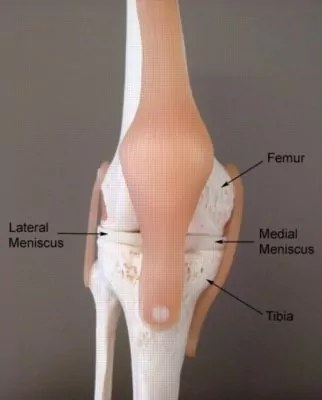
Anatomical structures within the knee (including the menisci, articular cartilage or bony surfaces) may be injured due to trauma, repetitive or prolonged strain or specific conditions (such as avascular necrosis, tumours or rheumatoid arthritis). This may cause gradual, irreversible degeneration to the knee or knee osteoarthritis. When these changes are severe and cause marked pain and functional limitation, knee replacement surgery may be indicated. This may be particularly suitable for patients with severe knee osteoarthritis who have not improved sufficiently with an appropriate physiotherapy rehabilitation program and treatment.
Knee replacement surgery usually takes around 2 – 4 hours to complete and is typically performed under a general anaesthetic, or occasionally, spinal anaesthetic. Antibiotic, or other medications, are typically administered before surgery to prevent infection or other possible complications.
Surgery usually entails an incision of around 30cm down the front of the knee / knee cap. Muscle and other soft tissue are moved to provide access to the knee joint. This is followed by cutting and then removing the diseased surfaces of the tibia and femur. The artificial prosthesis is then positioned and fixated with the use of bone cement. The knee cap is removed if required and replaced with a prosthetic ‘button’. Ligaments and muscles are rearranged and a drainage tube is placed into the wound. The wound is closed with clips or stitches. Knee replacement surgery typically involves a 7 – 10 day hospital stay. Patients who experience complications (such as infection) may require a longer period.
Indications for a knee replacement
Knee replacement surgery may be appropriate in patients with specific knee conditions (such as severe arthritis). It may be particularly indicated in those patients with severe pain and functional limitation (due to their condition) who have not responded adequately to conservative measures (entailing appropriate physiotherapy treatment and a high quality rehabilitation program).
An orthopaedic surgeon can determine whether a knee replacement is indicated based on several factors including:
- Injury severity and diagnosis
- Severity of symptoms (such as pain and movement restriction)
- Level of functional disability experienced by the patient
- Expected functional and symptomatic improvement following surgery
- Ability to comply with rehabilitation
- Age, occupation and recreational activities of the patient
- Cost
- Patient health and past medical history
- Potential surgical complications
Some knee conditions that are often treated with knee replacement surgery may include:
- Severe knee osteoarthritis or rheumatoid arthritis
- Avascular necrosis (i.e. bone death due to loss of blood supply)
- Gout
- Infection or ligament damage leading to severe osteoarthritis
- Bone dysplasias (i.e. abnormal bony growth)
- Certain tumours
Signs and symptoms following a knee replacement
Following knee replacement surgery, symptoms may vary markedly between patients depending on a variety of factors. These factors may include:
- pre-operative injury severity
- flexibility and strength of the knee prior to surgery
- severity of tissue trauma during surgery
- age of the patient
- pain perception, attitudes, beliefs and prior experiences
- psychological well-being of the patient
- quality of rehabilitation following the procedure
- type of anti-inflammatory or pain relief medication used
In some cases, patients may only experience minimal symptoms (such as stiffness and minor soreness) following a knee replacement. Although this occurs in a minority of patients it is more likely in:
- younger patients
- patients who have excellent strength and flexibility of the knee prior to surgery
- those patients using appropriate medication
- patients who adhere to appropriate rehabilitation under physiotherapy guidance
- those patients with a positive, low stress state of mind and excellent support network
Typical symptoms
Most patients experience prominent pain, swelling, and knee stiffness with symptom intensity ranging from minimal to severe. Pain may be situated in the back, front or sides of the knee and may radiate into the thigh, calf, shin, ankle or foot. Tenderness on firmly touching the knee (particularly on the surgical scars) is also usually experienced. Patients often experience an increase in symptoms during:
- repetitive or prolonged weight bearing activity (e.g. excessive walking or standing especially up or down hills or on hard or uneven surfaces)
- excessive bending, straightening or twisting of the knee
- climbing up or down stairs
- attempting to kneel
- repetitive, prolonged or forceful squatting, lifting or carrying.
Patients may also walk with a noticeable limp, or, in rare cases, be unable to weight bear due to pain. Symptoms may also be more prominent with prolonged periods of rest and may present as an ache, pain or stiffness that increases at night or upon waking in the morning.
In some cases, the knee may also feel unstable or weak and occasionally may give way or feel like it’s going to give way during certain activities. Bruising (particularly in the first few weeks), an occasional clicking sensation in addition to pins and needles or numbness are also common symptoms. These symptoms fluctuate in intensity between patients.
Treatment following a knee replacement

Members Only ContentBecome a PhysioAdvisor Member to gain full access to this exclusive content. For more details see Become a Member. Already a member? Login Now
Knee replacement treatment once home from hospital

Members Only ContentBecome a PhysioAdvisor Member to gain full access to this exclusive content. For more details see Become a Member. Already a member? Login Now
Prognosis following a knee replacement
Approximately 90% of patients who have a knee replacement experience improved mobility and less pain compared to before surgery. The recovery period varies significantly from patient to patient depending on a range of factors. Rehabilitation usually lasts 3 – 12 months or longer. It is important to be aware that a prosthetic knee replacement does not function the same as a normal knee (primarily due to reduced knee bending range of motion).
Some patients may require an extended period of rehabilitation following surgery. This may be the case in patients with more extensive knee injuries, with severe knee weakness or stiffness prior to surgery. Extended rehabilitation may also be required for patients who experience complications of surgery such as infection, or damage to local nerves or blood vessels. During rehabilitation, patients who do not rest sufficiently from aggravating activities (such as walking or standing excessively) or those who do not perform regular, appropriate rehabilitation exercises may also slow their recovery and adversely affect their outcome.
A knee prosthesis typically lasts 20 years or longer although excessive stress and strain (e.g. associated with obesity or excessive activity) may reduce its life span. Maintenance of a healthy body weight is therefore important to enhance the longevity of a knee replacement.
Physiotherapy following a knee replacement
Physiotherapy treatment is essential to hasten recovery and optimise the outcome in all patients following knee replacement surgery. Ideally, treatment should commence before surgery and may comprise:
- Education
- Activity modification advice
- The use of crutches, a walking stick or walking frame
- Anti-inflammatory advice
- Progressive rehabilitation exercises to improve flexibility, strength (especially the quadriceps muscle), balance and control
- Hydrotherapy
- Soft tissue massage
- Joint mobilization
- Dry needling
- The use of a compression support
- Electrotherapy
- Ice or heat treatment
- Biomechanical correction (e.g. the use of orthotics)
- Weight loss advice where indicated
- A gradual return to activity program
Potential complications following a knee replacement
Although mostly uncommon, some of the possible complications of knee replacement surgery may include:
- Temporary or permanent numbness around the incision
- Wound infection
- Lung infection
- Deep vein thrombosis
- Allergic reaction to the anaesthetic
- Joint dislocation
- Failure of the prosthesis (loosening or breaking)
- Damage to blood vessels in the leg
- Amputation of the leg due to severe wound infection or blood vessel damage
- Paralysis of the foot due to nerve damage
- Pulmonary emboli
- Heart Attack
- Stroke
- Death
Please note that most of these complications are extremely uncommon and very rarely encountered in Physiotherapy clinical practise. One exception being temporary or permanent numbness around the incision which typically affects the majority of patients.
Other intervention following a knee replacement
Despite appropriate treatment and physiotherapy management, some patients do not improve sufficiently following surgery. In these cases, the treating surgeon, doctor or physiotherapist can advise on the best management plan. This may comprise pharmaceutical intervention, further investigations (such as X-rays), manipulation under anaesthetic (to improve knee joint range of motion) or in rare cases, additional surgery.
Exercises following a knee replacement
The following rehabilitation exercises are often prescribed to patients following knee replacement surgery. These can typically commence once the physiotherapist or orthopaedic surgeon have advised it is safe to do so. You should discuss the suitability of these exercises with your physiotherapist prior to commencement. Generally, they should be performed 3 – 4 times each day and only provided they do not cause or increase symptoms.
Your physiotherapist can advise when it is appropriate to begin the initial exercises and eventually progress to the intermediate, advanced and other exercises. As a general rule, addition of exercises should take place provided there is no increase in symptoms.
Initial Exercises
Knee Bend to Straighten
Bend and straighten your knee as far as possible and comfortable without increasing your pain (figure 2). Aim for no more than a mild to moderate stretch in each direction. Repeat 10 – 20 times provided there is no increase in symptoms.
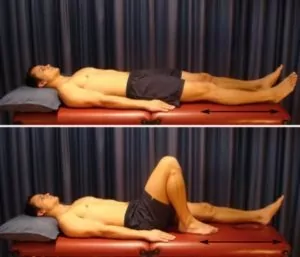
Static Quadriceps Contraction
Tighten the muscle at the front of your thigh (quadriceps) by pushing your knee down into a small towel (figure 3). Put your fingers on your inner quadriceps to feel the muscle tighten during contraction. Hold for 5 seconds and repeat 10 times as hard as possible and comfortable without increasing your symptoms.
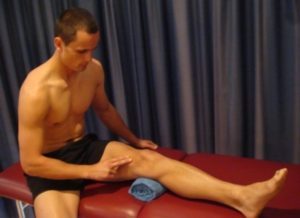
Quads over Fulcrum
Begin this exercise lying on your back with a foam roller or rolled towel under your knee and your knee relaxed. Slowly straighten your knee as far as possible tightening the front of your thigh (quadriceps) (figure 4). Hold for 5 seconds and repeat 10 times as hard as possible provided there is no increase in symptoms.


Members Only ContentBecome a PhysioAdvisor Member to gain full access to this exclusive content. For more details see Become a Member. Already a member? Login Now
Intermediate Exercises

Members Only ContentBecome a PhysioAdvisor Member to gain full access to this exclusive content. For more details see Become a Member. Already a member? Login Now
Advanced Exercises

Members Only ContentBecome a PhysioAdvisor Member to gain full access to this exclusive content. For more details see Become a Member. Already a member? Login Now
Other Exercises

Members Only ContentBecome a PhysioAdvisor Member to gain full access to this exclusive content. For more details see Become a Member. Already a member? Login Now
Rehabilitation Protocol following a knee replacement

Members Only ContentBecome a PhysioAdvisor Member to gain full access to this exclusive content. For more details see Become a Member. Already a member? Login Now
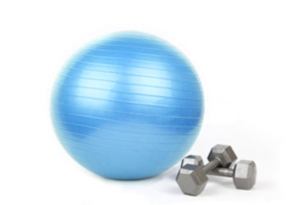 Physiotherapy products for a knee replacement
Physiotherapy products for a knee replacement
Some of the most frequently recommended products by physiotherapists to accelerate healing and optimise recovery in patients following a knee replacement include:
-
 Wheat Bags
Wheat Bags -
 Talar Made TRIO Orthotics (3/4 length)
Talar Made TRIO Orthotics (3/4 length) -
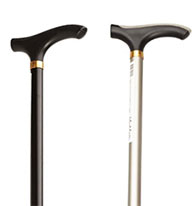 Aluminium Adjustable Walking Stick
Aluminium Adjustable Walking Stick -
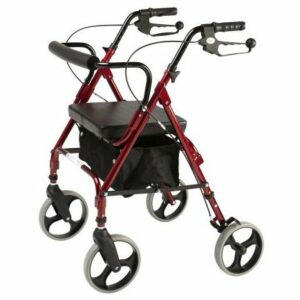 Alpha 418 Rollator Mobility 4 Wheel Walker
Alpha 418 Rollator Mobility 4 Wheel Walker -
 Forearm Crutches Adjustable – Standard Grip
Forearm Crutches Adjustable – Standard Grip -
 AllCare Band
AllCare Band -
 Fitness Ball Pro – Loumet
Fitness Ball Pro – Loumet -
 Premium Strapping Tape 38mm (Victor)
Premium Strapping Tape 38mm (Victor) -
 AllCare Tubing
AllCare Tubing -
 AllCare Spikey Massage Ball
AllCare Spikey Massage Ball -
 AllCare Instant Cold Pack (15 x 25cm)
AllCare Instant Cold Pack (15 x 25cm) -
 AllCare Foam Roller Round
AllCare Foam Roller Round -
 Tubigrip
Tubigrip
To purchase a physiotherapy product following a knee replacement click on the relevant link above or visit the PhysioAdvisor Shop.
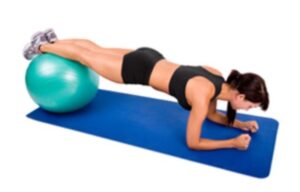 More exercises following a knee replacement
More exercises following a knee replacement
- Knee Strengthening Exercises
- Knee Stretches
- Quadriceps Strengthening Exercises.
- Leg Strengthening Exercises
- Leg Stretches
- Lower Body Gym Exercises (Machine Weights)
- Lower Body Gym Exercises (Free Weights)
- Cardiovascular Exercise
- Balance Exercises
 Useful links following a knee replacement
Useful links following a knee replacement
- How to use Crutches
- Knee Taping
- Patella Taping
- Ice or Heat
- R.I.C.E. Regime
- Do I Need Orthotics
- Choosing a Shoe
- Mechanical Pain
- Inflammatory Pain
- Understanding Pain
- Why is my injury not improving
 Find a Physio following a knee replacement
Find a Physio following a knee replacement
Find a local physiotherapist who can treat patients prior to or following knee replacement surgery.
Become a PhysioAdvisor Member

Link to this Page
If you would like to link to this article on your website, simply copy the code below and add it to your page:
<a href="https://physioadvisor.com.au/injuries/knee/knee-replacement”>Knee Replacement – PhysioAdvisor.com</a><br/>A total knee replacement is an invasive surgical procedure that is used to remove a diseased knee joint and replace it with an artificial joint or prosthesis.
Return to the top of Knee Replacement.

